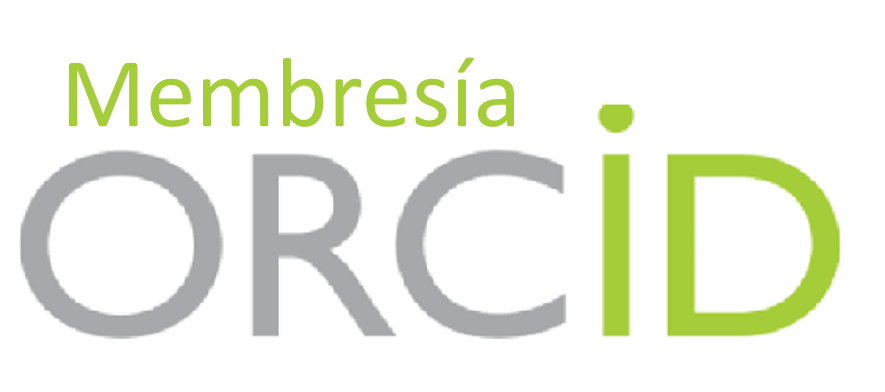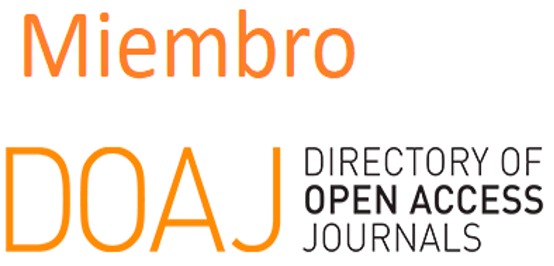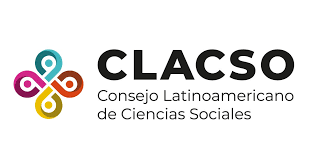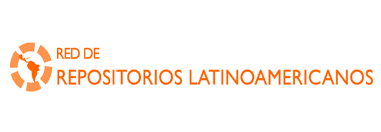
36.018
Visitas
22.584.542
Descargas
5.334.242
Documentos
Envíos recientes
El Género en la Lucha Política en Judith Butler
(Universidad Santo Tomás, 2024) Caro Castillo, Jinefth Alejandra; Roberto Alba, Nelson Fernando; Universidad Santo Tomás; https://scienti.minciencias.gov.co/cvlac/visualizador/generarCurriculoCv.do?cod_rh=0001373077; https://scholar.google.com/citations?user=xSgTyIP6weMC&hl=es&oi=ao; https://orcid.org/0000-0003-2806-7162
The aim of the present work is to show, through Judith Butler's proposal of performativity, how the category of gender and all the implications of the political struggle of feminism during the mid-twentieth century are being problematized. Hence, the focus is on three specific themes: language, feminism and politics. Now, it is worth clarifying that, for the present research only two texts of the American philosopher are used, since she has an extensive work, which are: Gender in Dispute and Allied Bodies and Political Struggle: Towards a Performative Theory of Assembly. As for the first one, it had a great worldwide recognition, and it is in which the concept of gender performativity is presented for the first time. And, in the second, Butler returns to the notion of performativity with the movement of the squares, likewise, it is an attempt to dispute the meaning of the word responsibility.
The first chapter consists of two sections: “Performativity in Judith Butler”, explores the category of performativity from her text Gender in Dispute, in order to highlight its political potential, and the second section, “Performativity from language”, shows how performativity, which is particularly linked to the theory of Austin's speech acts, is linked to language as a political potential. The second chapter deals with Judith Butler's critiques of classical feminism and the conception of gender and how it is developing in the political realm. The third chapter focuses on the differences and articulations that exist between the proposal made by Butler in the two texts, focusing on the changes presented by her category of performativity and political coalition.
Comparación de Cinco Modelos de Machine Learning para la Predicción de las Elecciones Presidenciales en Colombia: una Perspectiva con Datos Composicionales
(Universidad Santo Tomás, 2025-04-02) Leal Varón, Paula Andrea; Galeano Ortiz, Germán Andrés; Pineda Ríos, Wilmer Darío; Universidad Santo Tomás; https://scienti.minciencias.gov.co/cvlac/visualizador/generarCurriculoCv.do?cod_rh=0001454199; https://scienti.minciencias.gov.co/cvlac/visualizador/generarCurriculoCv.do?cod_rh=0001420586; https://scienti.minciencias.gov.co/cvlac/visualizador/generarCurriculoCv.do?cod_rh=0001882179; https://scholar.google.com/citations?user=Id9O7TkAAAAJ&hl=es&oi=ao; https://orcid.org/0000-0001-7774-951X; https://orcid.org/0000-0002-4306-1159
In recent years, numerous studies have employed machine learning techniques and compositional data analysis in various fields of study. However, their integration into electoral analysis remains limited. For this reason, this work combines both approaches by applying five machine learning models: random forest, gradient boosting, support vector machines, k-nearest neighbors, and feedforward neural networks, to predict the results of the presidential elections in Colombia at the municipal level, onsidering the data as compositional. Specifically, it forecasts the vote distribution in each municipality along a unidimensional Left-Right ideological spectrum. This approach aims not only to improve prediction accuracy but also to comtribute a significant advancement in methodologies applied to electoral analysis. The models were trained on 70% of the presidential election data from 2002 to 2022 and evaluated on the remaining 30%. The algorithms demonstrated similar performance across transformations of each ideological spectrum, with variability percentages between 56% and 94% in predicting vote proportions, with the feedforward neural networks model using the centered log-ratio transformation achieving the best results.
Diseño de los estándares mínimos de acuerdo a la Resolución 0312 de 2019 para la empresa grupo empresarial Mideas Colombia S.A.S.
(Universidad Santo Tomás, 2025-04-02) Maria Fernanda Suárez Gómez; Luz Ángela Benavides Cristancho; Alexander Patro Jiménez
The Telecommunications sector has been characterized by being a dynamic, highly competitive sector, this implies that as productivity increases, the probability of occupational accidents also increase, especially due to work at heights; This degree work aims to evaluate compliance with the minimum standards of the Occupational Health and Safety Management System (SG-SST) in the company GRUPO EMPRESARIAL MIDEAS COLOMBIA S.A.S, in accordance with Resolution 0312 of 2019. For this, the methodology included carrying out the initial self-assessment through the minimum standards tool of the ARL SURA, which the company is affiliated with, identifying a CRITICAL state of compliance, which evidenced the need for immediate intervention; The designed the documentation required for the implementation of the SG-SST, ensuring its compliance with current regulations and socialization with management was key to guaranteeing its commitment to the application of the PDCA cycle (Plan, Do, Check, Act). As a result, it was confirmed that the company had not developed any phase of the PDCA cycle, demonstrating a lack of planning, implementation, monitoring, and continuous improvement in occupational health and safety at all levels. Likewise, an improvement plan and recommendations were established, structured based on the findings of the initial assessment. Sharing the results with management enabled the generation of managerial and organizational commitment, key to the continued effective implementation of the OSHMS. In conclusion, the assessment revealed significant noncompliance with minimum standards, and documents were developed to facilitate their implementation. The acceptance and commitment of senior management will be crucial to ensuring continuous improvement and compliance with regulations, thus contributing to the safety and well-being of its workers.
Acciones de mejora para el fortalecimiento del sistema de gestión de seguridad y salud en el trabajo para la Constructora S.V.L. Vías y Estructuras SAS Neiva, Huila
(Universidad Santo Tomás, 2025-04-02) Alvarado Deachardi, Martha Liliana; Camacho Echeverry, Leidy Lorena; Corredor Suarez, Edna Maritza
Safety and health at work require comprehensive training of all personnel, from direct employees to contractors, to guarantee compliance with regulations and safe and healthy work environments. This training should address topics such as hazard identification, risk assessment and the controls necessary to mitigate them; This is why, according to Resolution 0312 of 2019, it is necessary to implement various activities and programs to improve occupational health and safety management. These include: training on occupational health issues, formation of brigades, periodic medical evaluations, inspections, and the strengthening of coexistence and COPASST committees, among other activities aimed at guaranteeing the activities of collaborators focused on a culture of safety and health. labor. Through the self-assessment of the Occupational Health and Safety Management System, it revealed the need to improve training, induction and re-induction plans, form emergency brigades and evaluate the health conditions of workers. To address these deficiencies, an action plan was implemented based on the PHVA cycle, allowing not only to comply with regulatory requirements, but also to take actions including documenting and implementing the standards that were non-compliant in favor of risk prevention and improvement. of workers' well-being
Libertad de Conciencia: marco jurídico para el reconocimiento del derecho por parte de las autoridades judiciales en Colombia
(Universidad Santo Tomás, 0025-02-27) Quintero Niño, Bleyddy Karina; Moncada Flórez, Juan Pablo
Bearing in mind that in our Colombian legal system there is no statutory norm that regulates the right to freedom of conscience and its corresponding objection for each specific case In view of the right to freedom of worship or religion, the historical development of the will be a nalyzed,the adoption of the same through universal and local international provisions and its abstraction for Colombian constitutional lawThus, specific cases studied by constitutional jurisprudence and protection by the Constitutional Court were analyzedin order to determine for such factual situations, the rulesdefined that the judicial operator in the exercise of his functionsmay take into account for the realization and protection of the fundamental right to freedom of conscience and its objection in specific cases of freedom of worship or religion.
Keywords: Conscience, objection, freedom, religion, worship
- Consulta nuestras colecciones

OVAs
Objetos Virtuales de Aprendizaje

CRAI-USTA
Centro de Recursos para el Aprendizaje y la Investigación

Gestión Institucional
Documentos institucionales de la Universidad Santo Tomás

Grupos de Investigación
Actualidad investigativa de nuestra institución

Ediciones USTA
Publicaciones de la editorial científica de la USTA

Revistas académicas
Artículos de las revistas científicas y académicas de la Universidad

Responsabilidad Social Universitaria
Producción de Extensión Universitaria y Proyección Social

Tesis y Trabajos de Grado
Documentos de grado de los estudiantes de pregrado y postgrado

Colegios Orden de Predicadores














.svg)


